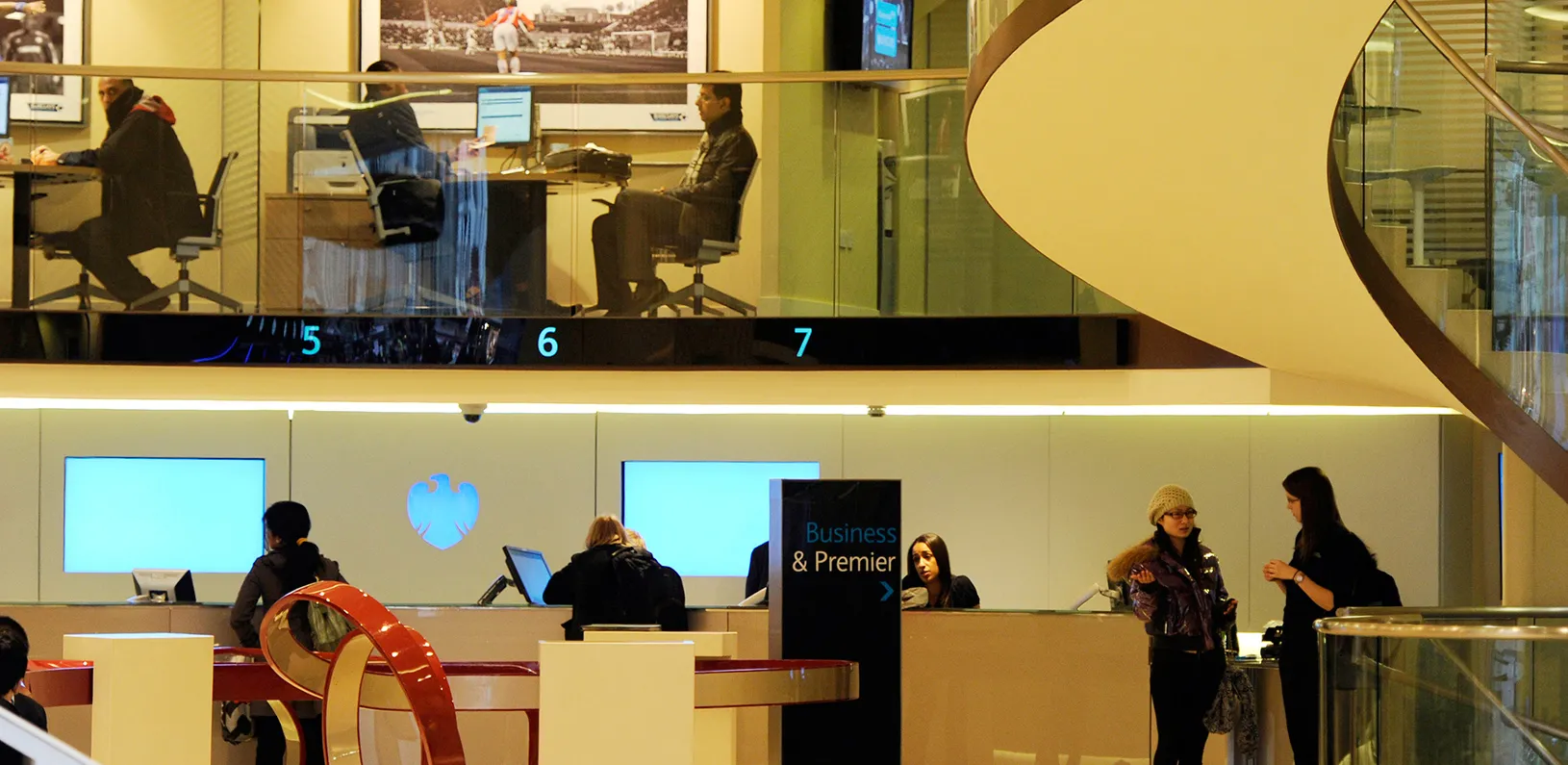Back to the Future: Do Banks Really Learn from Long-Term Relationships?
A pair of economists examine whether banks acquire any special wisdom from repeat borrowers.
March 24, 2015

Banks can learn from their customers. | Reuters/Paul Hackett
Who hasn’t dreamed about visiting the future and coming back to the present with information about what’s about to happen?
Time machines don’t exist, of course. But Victoria Vanasco, an assistant professor of finance at Stanford Graduate School of Business, and Matthew Botsch of Bowdoin College used a form of time-shifting to find out whether banks really learn something special about their business clients over time.
At issue was a basic question: In a world in which borrowing and lending seem overwhelmingly determined by formulas and algorithms, do banks actually employ the more personal and intangible insights that come from direct dealings with a borrower over many years?
Banks constantly tout their personal relationships and their individualized understanding of business borrowers. And there is solid evidence that banks do, in fact, offer more favorable interest rates to companies with which they have long-term relationships. But that doesn’t necessarily mean banks acquire any special wisdom through their long-term relationships with business clients. They might simply be more comfortable with familiar clients, and that comfort may or may not be grounded in reality. Or the banks might simply offer discounts as an incentive to keep companies as repeat customers.
Can “Soft Information” Help Lenders?
To find out the real story, Vanasco and Botsch carried out a remarkable statistical experiment.
Their goal was to find evidence of “soft information” — knowledge about a company’s underlying management that can’t be quantified or gleaned from financial reports. This type of knowledge comes from personal observations, rumors and an accumulation of nuanced experiences over time.
Vanasco and Botsch, an assistant professor of economics at Bowdoin, began by analyzing the data on thousands of syndicated loans between 1987 and 2003. They identified 5,740 pairs of lenders and borrowers who had done business together time after time. On average, the company in each pair had taken out an average of 3.5 loans through the same bank.
The researchers confirmed that, as expected, banks did offer increasingly favorable interest rates as companies became repeat customers. The next step was to figure out whether the companies that received increasingly favorable treatment were actually better than the companies that didn’t get better terms. And if the favored companies actually were stronger, did the banks know something about them that the general financial markets did not?
That’s when Vanasco and Botsch hit on the idea of going back to the future. Specifically, the researchers examined the stock performances of those companies at the exact period of time when Wall Street began to melt down: the weeks before and after the collapse of Lehman Brothers, in September 2008.
That was at least five years after any of the companies had received one of the loans being studied. But if those companies’ shares had held up relatively well during the crisis, compared with similar firms in the same industry, it was a good indicator that those companies were fundamentally well-managed.
“It’s harder to differentiate good companies from bad ones when times are good,” Vanasco explains. “It’s easier to spot lemons during the bust.”
How Repeat Borrowers Weather Crises
As it turned out, the companies that had received increasingly favorable loans years earlier were also the companies that held up better when the crisis hit in 2008. By contrast, the companies that hadn’t received more favorable loan terms — even though they, too, had long-term banking relationships — were generally weaker in the crisis.
In other words, the message from the future was that banks had indeed been on to something. They hadn’t sweetened the terms for all their long-term corporate borrowers. But the companies that did get gradually better terms turned out to be stronger during the Great Financial Crisis.
What Banks Learned
So, what is it that banks seem to be learning? Vanasco says that will be one of her next research topics. But she has some ideas.
“My hunch is that it’s something about the effectiveness of a firm’s governance and management, and how well it can deal with difficult situations,’’ she says. “It could be that they learn about the quality of the CEO, the quality of the board or something a bit more complex.” One question she hopes to explore, for example, is whether banks continue to offer discounts to a company if it has a change in chief executive.
One interesting side note is that the researchers found this kind of learning in what may be the least personal slice of bank lending: syndicated loans to large, publicly held corporations. It may well be that the intangible learning plays an even bigger role at local or regional banks that lend to small- and medium-size companies.
Victoria Vanasco is an assistant professor of finance at Stanford Graduate School of Business. Read the working paper “Relationship Lending: Do Banks Learn?”
For media inquiries, visit the Newsroom.
Explore More

Recessions Are Painful, but Stagnant Growth Could Prove More Challenging

What If We Taxed Corporations’ Payouts, Not Profits?



